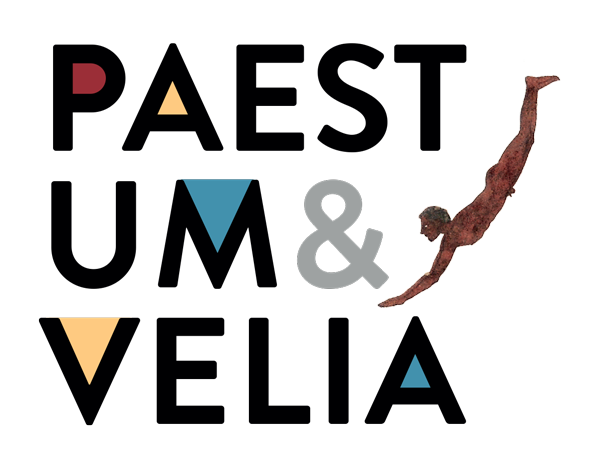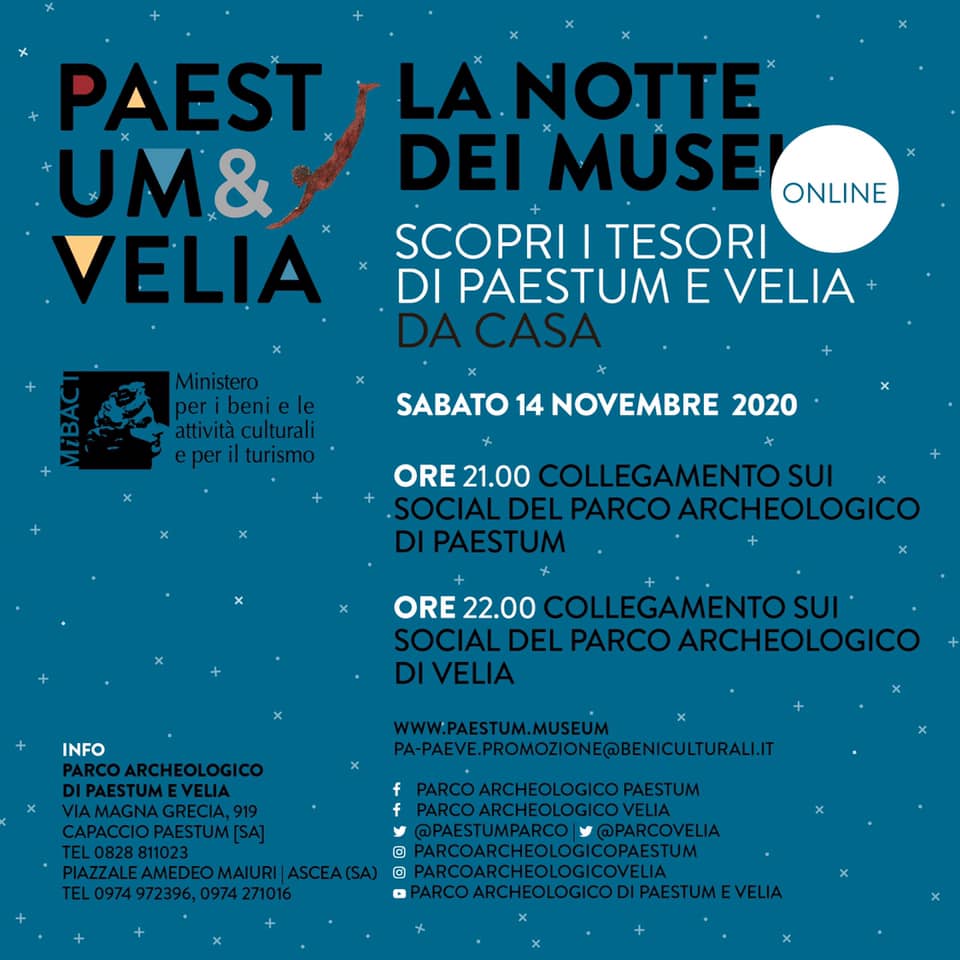

ear Readers,
We will discuss here some of the things we (still) don’t know about Paestum but which we would like to find out. Although Paestum is generally considered the best-known city in Magna Graecia, the site still poses many conundrums for archaeologists, architects and historians. This column explores some of the issues surrounding the site.
This month’s news concerns the archaeological park in general. Since 5 February 2020 the archaeological site of Velia has become part of the independent park authority together with Paestum.
Francesco Uliano Scelza, one of the park’s archaeologists, will look at the Archaeological Park of Paestum and Velia and, in particular, at the new site of Velia.
The Archaeological Park of Paestum and Velia (Parco Archeologico di Paestum e Velia) is a single institution which runs the main archaeological sites in the southern part of Campania, two of the most important and well-preserved cities of Magna Graecia in southern Italy. The change has important consequences. Firstly, two striking contexts with extraordinary potential are now run by the same administration. Henceforth it will be possible to develop a uniform approach to planning for both Paestum and Velia thanks to the managerial and financial autonomy which Franceschini’s reform has provided for several Italian cultural heritage sites. The reform, which has been successfully implemented for the site of Paestum, will undoubtedly offer unprecedented possibilities for reaching the overall and important aim of enhancing Velia, which has cyclically suffered from the lack of adequate and continuous support in terms of resources. Secondly, the new legislative provision should not be considered simply as an example of institutional reorganisation but as an attempt to start a process of coordinating the management of crucial heritage, especially in relation to the capacity of the newly-founded Park of Paestum and Velia to attract economic and human resources, both within local territory and within a national and international context. The new Park authority must build clear and productive relationships with institutions and bodies, both institutional and private, that are already active in the territory. It is equally predictable that Velia will become the focus of attention of the international community through research and enhancement initiatives at the site.
One initial result is clearly visible. From the very first day of reopening following the period of lockdown caused by the Covid-19 emergency, the site of Velia was spruced up and made ready to welcome the public and show off some of its treasures. It is now possible to visit the lower part of the city with the residential insulae, the public buildings of insula II, the Cobellis farm and the Roman baths. Visitors can climb the slope of the acropolis to reach and admire the archaic district of houses, Porta Rosa, the theatre, the temple on the promontory, the ruins of the medieval fortifications and the antiquaria which tell the story of the city, from the period of its foundation until the most recent occupation phases. In an extremely short timescale, the Park’s programme includes extending accessibility, enabling visitors to walk along the ridge that joins the acropolis to the fortress of Castelluccio, a path already known as the Path of the gods, and projects designed to refurbish some of the buildings in the area so that they can be used for workshop activities (research, education, training, etc.).
Another priority for the new park is to increase and develop digital tools, apps designed to support the visitor experience and maintenance, the cultural management system, the website, etc.
Attention will also focus on actions that will make Velia accessible to people with disabilities. The site will be managed in a way that ensures universal access with activities that have already been tried out and implemented at Paestum.
Within this planning framework, it is important to emphasise that work is being carried out to enhance the site of Velia as part of the National Operational Program on Culture and Development 2014-2020 “Velia – Città delle acque”. Based on a project of the Superintendency (Soprintendenza Archeologia, Belle Arti e Paesaggio per le province di Salerno e di Avellino) and directed by the Regional Secretariat of Campania (Segretariato Regionale per la Campania), the work will affect a large part of the ancient city and the refurbishment of the Park’s facilities (plant engineering, furnishing, management of green space, etc.).
Based on these initial considerations, the enhancement of Velia seems wide-ranging and challenging. In order to ensure the implementation of the project, it is necessary to build new relationships with local players and involve them in the regeneration of Velia. The intervention should reconnect the site of the ancient city to the local context so that it is open to local approaches, the best and most fruitful of energies that operate in the field of services, research and production. In this way Velia will become part of a broader plan for growth of the territory, a place and an occasion where solutions to consolidate the local economy and to run commonly agreed activities can be tried out. At Velia it will be possible to study archaeology and the local territory, to learn about and explore themes related to ancient philosophy and science, to conduct research on material culture, to carry out archaeological excavations, to promote local products and encourage the widespread use of traditional techniques for managing and safeguarding the environment, to organise recreational events and conferences, and to establish a new relationship between local communities and cultural heritage sites.
In short, Velia ought to become another string in the bow of the territory. Together with Paestum, it will become a distinctive part of the landscape and identity of an entire region: Cilento.
These two ancient sites, which differ so markedly from each other, mark the first step, together with the new Archaeological Park and the agreement with other institutions, the superintendency, local and territorial organisations, of a process that will lead to the creation of a large cultural district, firmly rooted to the territory and its resources.






